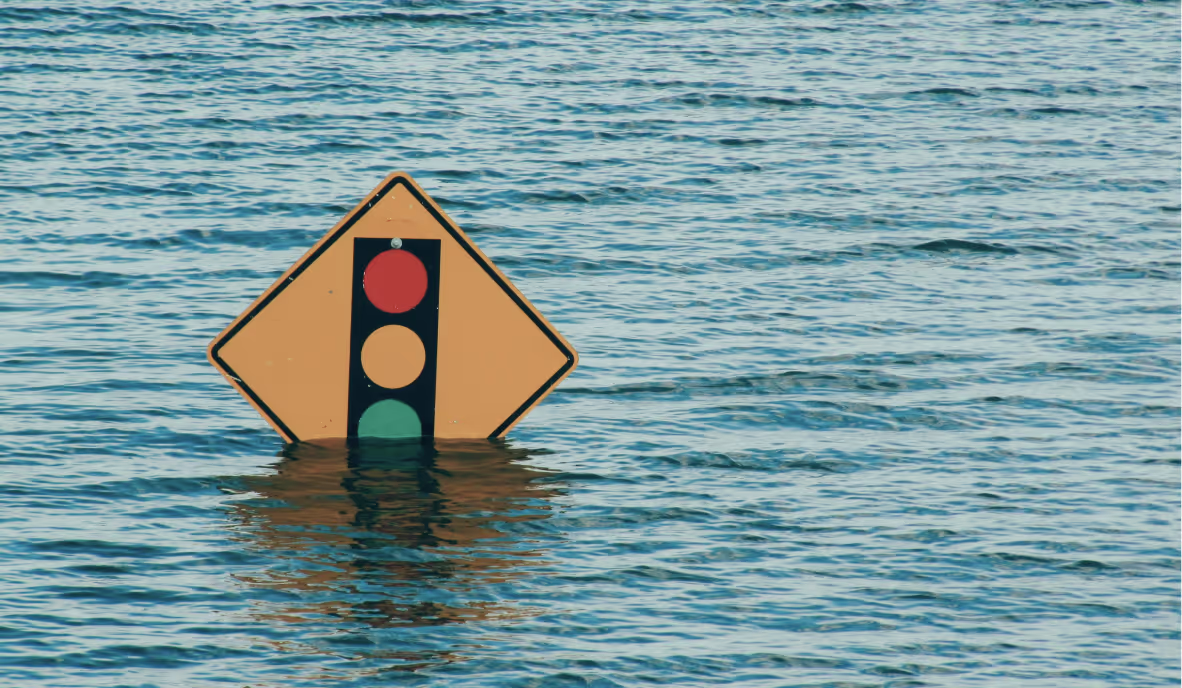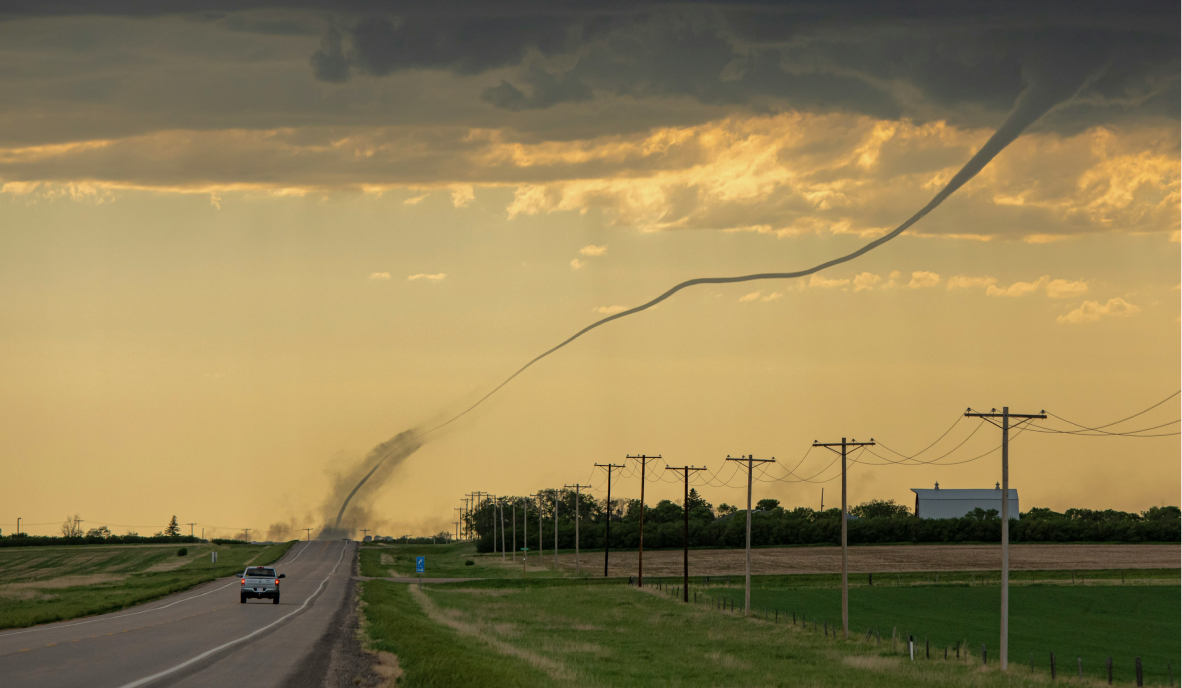How to Prepare for Natural Disasters in Your State

Join the community





Natural disasters such as wildfires, hurricanes, and floods are becoming more frequent and severe due to climate change. It's no longer a question of if they'll affect us, but when. When you know which disasters are most likely to hit your area, you can prep better.
If you're in the U.S., FEMA's National Risk Index is an invaluable tool. Its natural disasters map displays risk levels (from very low to very high) for over 15 natural hazards in every U.S. county. Enter your county to compare its risk level to the national average and see what types of risks are most prevalent.
Note: The Trump administration is threatening to withdraw funds from FEMA, so this tool may not always be available. Here's a petition to keep funding for FEMA>
The Next Step is Taking Action
After you know your risks, take two quick actions: Set up emergency alerts and plan your evacuation route with your family.
Also, make sure that you have a go bag ready. It’s a grab-and-go bag that you can pick up at the time of emergency and leave immediately.
Check out The Ultimate Go Bag List for Natural Disasters
To prepare for potential insurance claims after a disaster, take photos and videos of your valuable belongings, especially the ones that are inside drawers and closets. Document everything in your home digitally for easy reference.
{{cta-join2}}
Preparing For The Most Common Disasters
Here are some of the most common disasters and how you can prepare yourself if they are likely to occur in your area. Check out the link at the end of each paragraph. It helps you prepare, survive, and be safe after a disaster.
Heat Waves
Heat waves occur when temperatures stay above 90 degrees with high humidity for at least two to three days. These extreme heat events are actually the deadliest of all weather-related hazards, causing more annual deaths than any other natural disaster.
The dangers come from your body working overtime to maintain a normal temperature, which can lead to heat stroke and other serious health issues. Heat waves can also cause indirect problems like increased air pollution, power grid overloads, and widespread infrastructure strain.
If a heat wave hits, stay in air-conditioned spaces whenever possible. If you don't have AC at home, head to cooling centers like malls, libraries, or community centers. Keep yourself hydrated with water (avoid caffeine and sugary drinks), take cool showers, and check on vulnerable neighbors, especially the elderly or those without AC.
Preparation is key — make sure your home's AC system is working properly, install window reflectors or awnings to block heat, and have backup power solutions ready. Consider portable fans that run on batteries, and be sure you’re stocked up on batteries. If you must be outside, wear light-colored, loose clothing, use sunscreen, and avoid strenuous activity during peak heat hours.
How to prepare for Heat Waves →
Flooding
Flooding isn't just a coastal concern. While hurricanes and high tides can cause floods along the coasts, dangerous flooding can happen anywhere there are rivers, streams, or even just heavy rainfall. With extreme weather becoming more common, floods pose an increasing risk to communities everywhere.
If you live in a flood-prone area, the most important step is to get flood insurance, even if you're not in a designated high-risk zone. You should also consider structural modifications to protect your home. This includes elevating your house and important utilities above the Base Flood Elevation (BFE), installing flood vents in enclosed areas, and using flood-resistant materials in lower levels.
To minimize potential damage, protect your utilities by elevating or floodproofing HVAC systems, electrical components, and other mechanical units. Install a backflow valve to prevent sewage backup, and secure any fuel tanks to prevent them from floating or tipping over during floods. For additional protection, consider adding waterproof veneers to exterior walls and sealing basement walls with waterproofing compounds.
Hurricanes
The hurricane season in the U.S. lasts from mid-May to the end of November. Hurricanes bring storm surges, wind damage, rip currents, and flooding which can cause major damage.
If you’re not ordered to evacuate, you may lose power and safe water may be hard to come by, if your water works at all. Have the supplies and equipment you need to live for 3-5 days without power or water.
If you evacuate, bring with you your go bag and clothes for a week, if possible.
If you need to evacuate your home after the storm, find a designated storm shelter and prepare your family to get there. If you are stuck in flood waters, do not try to walk, swim, or drive through them. Instead, turn around and try and go to the highest level you can find.
How to prepare for Hurricanes →
Tornadoes
They’re usually accompanied by thunderstorms and warm weather, but tornadoes can happen anytime and bring in intense winds with them in the form of tunnels. These winds can reach over 200 miles per hour.
If your county has a higher risk of tornadoes (for those in the Midwest and the Southeast), you should have a shelter-in-place plan for each place you frequent: your home, your work, your car, etc. Make sure your plan accounts for your family and pets, and practice before an emergency arises. If you’re inside, identify a safe room, basement, storm cellar, or a small interior room on the lowest level of a sturdy building. Plan to bring with you a flashlight and battery-powered radio if you can.
If your home isn’t equipped to withstand strong winds, you may consider a safe shelter such as a safe room built using FEMA criteria or a storm shelter built to ICC 500 standards.
How to prepare for Tornadoes →
Wildfires
Wildfires don’t just burn the forests and grasslands, they can spread quickly and engulf entire communities with them. If you are in a wildfire-prone zone, make sure that you are signed up for real-time updates. Keep an eye out for community alerts, Emergency Alert System (EAS), and Wireless Emergency Alert (WEA). You can also monitor air quality alerts to keep yourself updated. It’s important for everyone in your family to know the evacuation route from the house, workplace, school, or daycare. If possible, keep a go bag at all of these places.
How to prepare for Wildfires →
Earthquakes
While earthquakes can happen anywhere, they are more likely to happen in Alaska, California, Hawaii, Oregon, Puerto Rico, Washington, and the entire Mississippi River Valley. The additional challenge with earthquakes is that they can cause fires, tsunamis, landslides, or avalanches so you need to prepare for multiple disasters together. As a thumb rule, stay outdoors if you can and if you are trapped inside your house, turn face down and cover your head and neck with a pillow.
After an earthquake, stay alert for hazards like damaged buildings, leaking utilities, and downed power lines. If you are in a damaged building, evacuate immediately. Also be prepared for aftershocks. If you are trapped, signal for help by texting or banging on surfaces while protecting your airways.
How to prepare for Earthquakes →
Tsunami
A tsunami can be caused by earthquakes, underwater landslides, volcanic eruptions, or asteroids resulting in enormous ocean waves. These waves are 10-100 feet high and can travel at 20-30 miles per hour. These can happen anywhere along the U.S. coasts with the ones bordering the Pacific Ocean or Caribbean having the greatest risk. Apart from signing up for the alerts, evacuate and get to higher ground if you see any natural signs of a tsunami such as a sudden rise or draining of ocean waters
Check out this resource for other disasters and emergencies.







.jpg)




